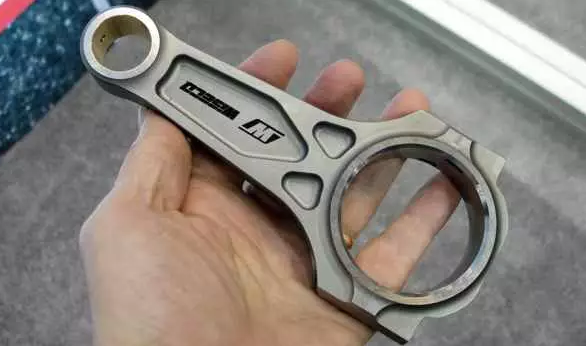Defining the Connecting Rod
A connecting rod is a pivotal component in most internal combustion engines. It serves as a crucial link between the piston and the crankshaft, converting the linear motion of the piston into rotational motion of the crankshaft, which drives the vehicle’s wheels.

Components of the Connecting Rod
The structure of a connecting rod usually consists of three main parts:
- The Big End: This part is attached to the crankshaft and rotates around the crankpin. It is typically split to allow for assembly around the crankshaft.
- The Small End: The small end connects to the piston with a wrist pin, allowing it to pivot as the crankshaft rotates.
- The Rod: This is the long, typically cylindrical part that connects the big end to the small end.
This essential mechanical component is designed to withstand extreme tension and compression forces that occur as the engine operates.
Materials and Manufacturing
The connecting rod has to be exceptionally sturdy due to the severe stress it endures. Thus, it’s typically made from durable materials like steel and aluminium. The choice of material largely depends on the specific requirements of the engine in terms of performance and cost.
| Material | Advantages | Disadvantages |
|---|---|---|
| Steel | High strength, durability | Heavier, more expensive |
| Aluminium | Lighter, cheaper | Less durable |
Role in Engine Performance
The connecting rod’s role is pivotal in an engine’s performance. An ideal connecting rod effectively transforms the linear movement of the pistons into rotational movement of the crankshaft with minimum loss of energy. Its weight and material can significantly affect the engine’s power output, fuel efficiency, and overall lifespan.
Potential Issues and Maintenance
Like any mechanical component, a connecting rod can encounter problems. These could include cracking or bending due to extreme stress, especially in high-performance or older engines. Regular maintenance, such as lubrication and periodic inspection, can help prevent major issues and prolong the life of the connecting rod.
In conclusion, the connecting rod plays a vital role in an engine’s operation. Its design, material, and condition can significantly influence an engine’s performance and lifespan. It’s important to regularly maintain these components for an engine to operate efficiently and reliably.